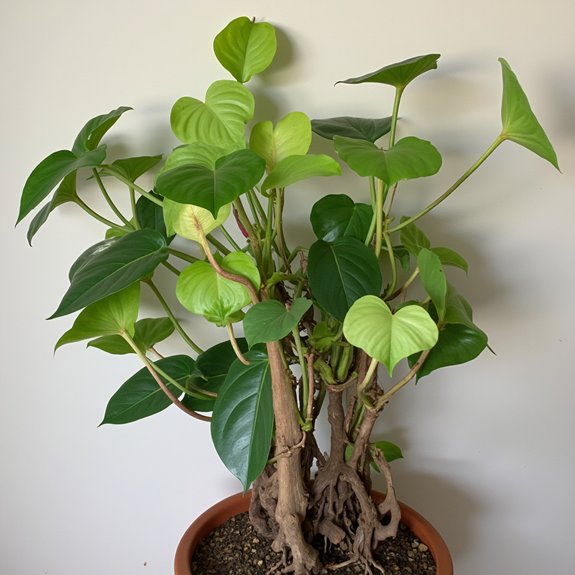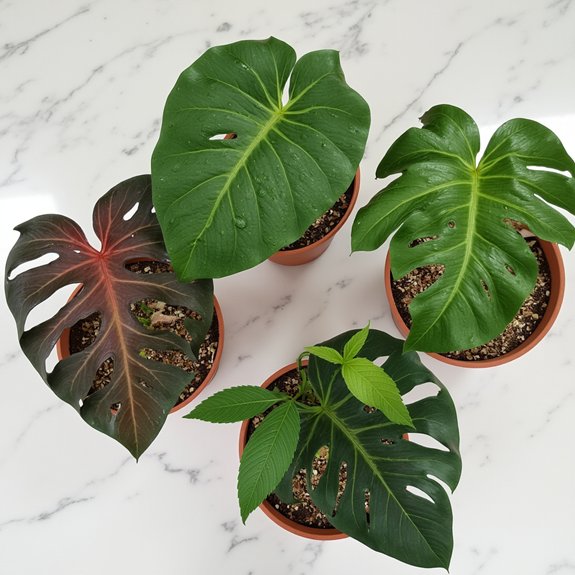Philodendrons possess an impressive capacity for longevity that most houseplant enthusiasts never fully realize. These tropical climbers can survive well beyond two decades indoors, yet many specimens barely reach five years due to preventable care mistakes. The difference between a thriving, decades-old philodendron and one that struggles after a few seasons often comes down to understanding their specific environmental needs, watering patterns, and maintenance schedules—secrets that transform ordinary plant care into masterful cultivation.
Contents
- 1 Understanding Philodendron Lifespan Expectations
- 2 The Tree Lovers: Origins and Natural Habitat
- 3 Popular Species and Their Unique Characteristics
- 4 Essential Care Factors That Impact Longevity
- 5 Mastering Watering Techniques for Optimal Health
- 6 Creating the Perfect Environment: Temperature and Light
- 7 Maintenance Routines: Repotting and Fertilization
Understanding Philodendron Lifespan Expectations

While many houseplant enthusiasts expect their philodendrons to last just a few years, these resilient tropical plants can actually thrive for decades with proper care. Understanding their lifecycle stages helps set realistic expectations for long-term growth. In ideal conditions, healthy philodendrons can live over 20 years indoors, with some species reaching 100+ years in native habitats. However, most houseplant owners report average lifespans of five years due to inconsistent care. Growth patterns vary considerably between species, with heartleaf varieties showing remarkable tolerance while variegated specimens require more attention to reach their full potential.
The Tree Lovers: Origins and Natural Habitat
To understand why these plants demonstrate such impressive longevity potential, examining their natural origins reveals key insights about their durability. Philodendrons are native primarily to the Americas and West Indies, where they’ve adapted to thrive in warm, humid climates for centuries. The name “philodendron” comes from Greek, meaning “tree lovers,” reflecting their natural climbing behavior.
Many species are epiphytes in their native regions, using trees for support rather than parasitically draining nutrients. These Philodendron habitats feature consistent warmth and humidity, conditions that explain why proper environmental control markedly impacts their impressive lifespans in home settings.
Popular Species and Their Unique Characteristics

Among the nearly 500 species in the Philodendron genus, five varieties stand out for their combination of longevity, adaptability, and distinctive visual appeal. The Heartleaf Philodendron (hederaceum) proves perfect for beginners, tolerating missed waterings and low light conditions. Pink Princess (erubescens cultivar) showcases stunning pink variegation, though it demands specific care routines.
Silver Leaf (brandtianum) displays glossy silver foliage, while Philodendron mamei features lighter green leaves with elegant silver stripes. The rare Gloriosum boasts large, velvety green leaves. This species diversity demonstrates unique adaptations, from climbing epiphytes to ground-dwelling varieties, each requiring tailored care approaches for maximum lifespan.
Essential Care Factors That Impact Longevity
Understanding specific care requirements becomes the determining factor between a philodendron that survives five years versus one that thrives for decades. Proper watering prevents root rot, the primary killer of indoor philodendrons. Allow soil’s top 2-3 inches to dry between waterings, checking moisture weekly.
Temperature consistency above 60°F year-round prevents cellular damage that shortens lifespan. Soil quality directly impacts nutrient absorption, requiring fresh potting mix every 2-3 years. Regular pest management through monthly leaf inspections catches spider mites early, preventing stress-induced decline.
Bright, indirect light sustains healthy growth patterns, while species-specific fertilization schedules maintain long-term vigor.
Mastering Watering Techniques for Optimal Health

Water serves as both lifeline and potential destroyer for philodendrons, making proper watering technique the single most critical skill for plant longevity. The key lies in monitoring soil moisture rather than following rigid schedules. Check the top two to three inches of soil regularly; when dry, it’s time to water thoroughly until excess drains from the bottom.
Watering frequency varies dramatically based on season, humidity, and pot size. Most philodendrons need water every 7-10 days during growing season, extending to 14 days in winter. Consistent soil moisture checks prevent both drought stress and deadly root rot.
Creating the Perfect Environment: Temperature and Light
While proper watering keeps philodendrons alive, temperature and light conditions determine whether they merely survive or truly flourish. Most species thrive in temperatures consistently above 60°F, with damage occurring when exposed to cooler conditions. Temperature fluctuations stress plants, potentially shortening their impressive 20-year lifespans.
Light intensity plays an equally essential role in longevity. Variegated varieties demand bright, indirect light to maintain their stunning patterns, while heartleaf philodendrons tolerate lower light situations. However, inadequate lighting weakens growth and reduces disease resistance. Position plants near east-facing windows for ideal morning sun, avoiding harsh afternoon rays that scorch delicate foliage.
Maintenance Routines: Repotting and Fertilization
How often should dedicated plant parents refresh their philodendron’s living space? Repotting frequency follows a simple rule: every 2-3 years keeps plants thriving. Fresh soil provides essential nutrients, while larger containers accommodate growing root systems. Signs like circling roots or water running straight through indicate it’s time.
Fertilization methods vary by species, but most philodendrons benefit from monthly feeding during growing seasons. Balanced liquid fertilizers work well, though diluted applications prevent nutrient burn. Monitor leaves for yellowing or stunted growth, which signals deficiency. Skip winter fertilizing when growth naturally slows.
